Rare Rides Icons: The History of Stutz, Stop and Go Fast (Part XI)

We resume our coverage of Stutz today and pick up in the mid-Seventies. With the reborn brand’s personal luxury Blackhawk attracting the rich and famous from across the nation, Stutz attempted to keep the car fresh through visual edits every couple of years. In addition to the marketing appeal of a new “generation” Blackhawk, management was also able to cut costs: Split windshields became one-piece, and bespoke doors were replaced with those of a Pontiac Grand Prix.
All the while, the Blackhawk’s price continued to escalate and doubled by the end of its first decade. It was by far the most expensive American car on sale. We find ourselves in 1977, as Stutz continued with Blackhawk edits after the one-off convertible version named d’Italia was scrapped.
The Blackhawk entered its fifth-generation guise in 1977. With minor visual revisions, the Blackhawk would see three more model years before it was majorly revamped. Worth a note, due to the interesting way the Stutz cars were labeled, Stutz began to add “VI” badges on the Blackhawk as early as 1975. The badges stayed put through 1979.
Said badges were on the door panel next to the golden Blackhawk script and were one of the only ways to tell the latter Blackhawk apart from its predecessors. Other interior materials were changed only vaguely, with things like an updated shift lever and Cadillac dual-zone climate control modernized over earlier examples.
Outside, a small VI badge appeared in the grille, though from any distance it just looked like a square. The factory wire wheel design changed slightly and adopted more deep dish styling instead of the flush wires earlier in the run. Changes were minor and mixed within model years after about 1973, so it’s difficult to tell the years apart without a close inspection.
As mentioned last time, it seems the Blackhawk was assembled with whatever trim was available in the Turin, Italy coachworks that week. There was little regard if it matched the current “new generation” Blackhawk.
One notable change for 1977 was a completely revised lineup of engines, as emissions regulations of the late Seventies strangled horsepower and slowly killed off the big-block V8. The entry-level Blackhawk engine in ’77 was Ford’s 302 cubic-inch (4.9-liter) Windsor V8, which was used from 1966 through 2001 in products like the Ford Torino and Explorer. Next in displacement was the Pontiac 350 V8 (5.7L), as pulled from the contemporary Grand Prix. Ford provided a 351 Windsor (5.8L) to Stutz as well, not to be confused with Ford’s 351 Cleveland V8.
Stepping up to 400 cubic inches, the Blackhawk could be had with the Pontiac T/A 6.6 from the Trans Am. Two more 400-plus engines joined the lineup in 1977, the 425 Cadillac V8 (7.0L) from its larger sedans, and Ford’s enormous 460 V8 (7.5L) used in the E-Series vans between 1975 and 1996.
By this time the Blackhawk was quite a mélange: Late Sixties platform, Sixties and Seventies interior materials from GM, and engines from the Malaise era. But it was coming to an end soon. The personal luxury coupe (and North American cars generally) experienced big-time downsizing between 1977 and 1980, and Stutz could no longer produce the Blackhawk on the 1969 G-body.
As mentioned last time, Stutz employed famed designer Paolo Martin to draw up a new, slightly more modern Blackhawk in 1976. It had lesser overhangs and tidier, more upright proportions generally. The company held on to those sketches, knowing full well the end was near for the original Blackhawk. Its last G-body outing was in 1979, but not before Stutz made the bewildering decision to introduce a new model on a dead platform.
That’s right, the convertible idea at Stutz continued percolating after the failed d’Italia was canceled. Once the roofless roadster was sold off to Evel Knievel, work continued in the background. New safety regulation said convertibles had to have a roll bar, and company founder James O’Donnell was insistent that Stutz designers make it happen.
So in 1979, there was a second car added to the Stutz lineup, the Bearcat. It was a resurrection of the sports car nameplate from the company’s first life. Nobody purchased a new Bearcat after 1933, during the DV-32 engine years just before the company’s first bankruptcy.
In essence, the Bearcat was the d’Italia but edited to comply with roll-over regulations. And though it was considered a separate model to the Blackhawk, it wore the exact same body save for the roof. As shown in the only PR photo of the 1979 Bearcat available on the internet, the roof of the Blackhawk was replaced by a thin Targa strip, wrapped in canvas and emblazoned with the Bearcat script. The rest of the roof folded behind the rear seats and was covered via a snap-on tonneau.
There is no further information on how many 1979 Bearcats were made, but it’s suggested the ask for one that year was, like the d’Italia, $100,000 ($423,292 adj.). Undoubtedly only a small handful were produced, as Stutz prepared to transition its bread and butter two-door offering to a new platform. Time for a sidebar into Pontiac.
Downsizing in the late Seventies hit the Grand Prix hard, as the personal luxury coupe moved on to the smaller A-body platform for 1978. This platform would later be renamed G (again) for 1982 onward, as GM enjoyed confusing people with its platforms. The new 108-inch wheelbase on the 1978 Grand Prix was a far cry from the 118 inches Stutz was used to.
Thus Stutz had to step up a size and go with the B-body. From 1980 the Blackhawk was based on the Pontiac Bonneville. Bonneville entered its sixth generation in 1977, as GM unleashed its massively successful full-size downsizing effort. The B-body Bonneville had a 116-inch wheelbase, not far off from the Grand Prix chassis the artisans in Italy used since 1971.
The Blackhawk had to get a bit shorter in its new guise, as the nearly 228-inch body gave way to something closer to the Bonneville’s 214 inches. In 1977, Bonneville had an overall width of 76.4 inches. There aren’t any posted measurements for the 1980 Blackhawk, so we’ll have to rely on Bonneville dimensions here for a general idea. The B-body platform served as a decent stand-in for the long-deceased G from the Grand Prix.
With its new platform, the Blackhawk was forced to get a bit more formal. One only needs to consider the late Sixties Grand Prix alongside a 1977 Bonneville two-door to see why. The Bonneville was upright, square, and much more a two-door sedan than a sportier and relaxed fastback or hardtop. Glass was more upright in all directions, and the roof cut sharply toward the trunk.
The folks at Stutz could only do so much with that starting point. The Blackhawk retained as much of its former glory as it could, but the changes forced upon it by a modern platform were obvious. Virgil Exner passed away long before (in 1973), so there was no guiding hand from the coupe’s ideator, either. We’ll pick up there next time, and review the new Blackhawk’s styling, interior, and mechanicals.
[Images: Stutz, YouTube, GM]

Interested in lots of cars and their various historical contexts. Started writing articles for TTAC in late 2016, when my first posts were QOTDs. From there I started a few new series like Rare Rides, Buy/Drive/Burn, Abandoned History, and most recently Rare Rides Icons. Operating from a home base in Cincinnati, Ohio, a relative auto journalist dead zone. Many of my articles are prompted by something I'll see on social media that sparks my interest and causes me to research. Finding articles and information from the early days of the internet and beyond that covers the little details lost to time: trim packages, color and wheel choices, interior fabrics. Beyond those, I'm fascinated by automotive industry experiments, both failures and successes. Lately I've taken an interest in AI, and generating "what if" type images for car models long dead. Reincarnating a modern Toyota Paseo, Lincoln Mark IX, or Isuzu Trooper through a text prompt is fun. Fun to post them on Twitter too, and watch people overreact. To that end, the social media I use most is Twitter, @CoreyLewis86. I also contribute pieces for Forbes Wheels and Forbes Home.
More by Corey Lewis
Latest Car Reviews
Read moreLatest Product Reviews
Read moreRecent Comments
- Jeff One less option will be available for an affordable midsize sedan. Not much can be done about GM discontinuing the Malibu. GM, Ford, and Stellantis have been discontinuing cars for the most part to focus on pickups, crossovers, and suvs. Many buyers that don't want trucks or truck like vehicles have moved onto Japanese and South Korean brands. Meanwhile large pickups and suvs continue to pile up on dealer lots with some dealers still adding market adjustments to the stickers. Even Toyota dealers have growing inventories of Tundras and Tacomas.
- Lorenzo This car would have sold better if there was a kit to put fiberglass toast slices on the roof.
- Lorenzo The Malibu is close to what the 1955 Bel Air was, but 6 inches shorter in height, and 3 inches shorter in wheelbase, the former making it much more difficult to get into or out of. Grandma has to sit in front (groan) and she'll still have trouble getting in and out.The '55s had long options lists, but didn't include a 91 cubic inch four with a turbo, or a continuously variable transmission. Metal and decent fabric were replaced by cheap plastic too. The 1955 price was $1765 base, or $20,600 adjusted for inflation, but could be optioned up to $3,000 +/-, or $36,000, so in the same ballpark.The fuel economy, handling, and reliability are improved, but that's about it. Other than the fact that it means one fewer sedan available, there's no reason to be sorry it's being discontinued. Put the 1955 body on it and it'll sell like hotcakes, though.
- Calrson Fan We are already seeing multiple manufacturers steering away from EVs to Hybrids & PHEVs. Suspect the market will follow. Battery tech isn't anywhere close to where it needs to be for EV's to replace ICE's. Neither is the electrical grid or charging infrastructure. PHEV's still have the drawback that if you can't charge at home your not a potential customer. I've heard stories of people with Volts that never charge them but that's a unique kind of stupidity. If you can't or don't want to charge your PHEV then just get a hybrid.
- AZFelix The last time I missed the Malibu was when one swerved into my lane and I had to brake hard to avoid a collision. 1 out of 5⭐️. Do not recommend.



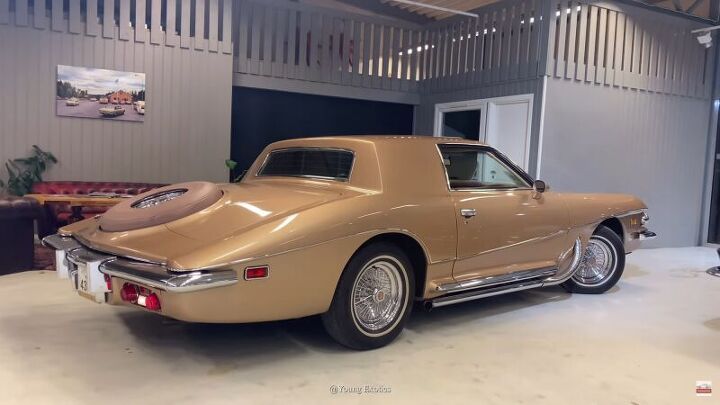
























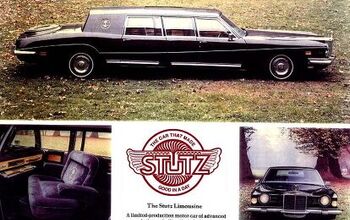

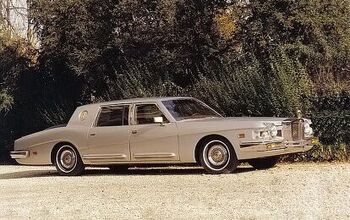
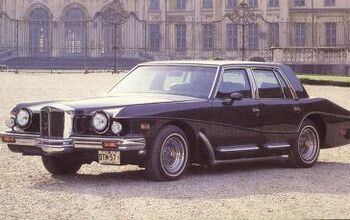
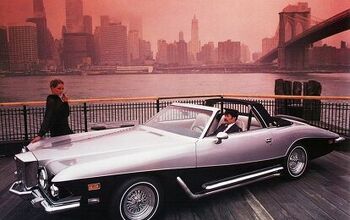










Comments
Join the conversation
Whoever designed that lurid front end most definitely did not have modern pedestrian safety standards in mind. The prevailing thought seems to be, "just keep the bloody corpse away from the windshield."
Seems that the designers took what was unique/distinguishing on the Grand Prix and made it grotesque. Much like someone who has had too much cosmetic surgery. The total effect is 'shocking'. As an aside the 'gold' plaque/applique on the passenger side instrument panel reminds me of the ones that came on Designer Edition Mark IV's. Which of course also came with Ford's "enormous" 460cid engine. Some if not all of the Designer Editions also had dual exhausts and a rudimentary ABS system. Which I am confident Corey will address in his excellent series on the Marks.